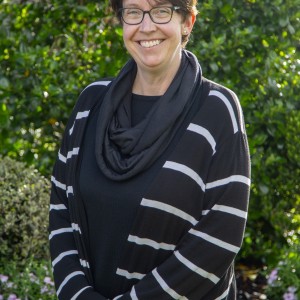This competition allows students to explore the nature of science, particularly the part of the science curriculum that involves ‘investigating in science’. This asks that students build on prior experiences, working together to share and examine their own and others’ knowledge. They also ask questions, find evidence, explore simple models, and carry out appropriate investigations to develop simple explanations. (TKI, science curriculum)
The title of the challenge was ‘Reservoirs and Relationships’ and we were asked to explain how natural geothermal features are inter-connected with human uses of geothermal resources, including electricity generation. Because we can see this happening from our school each and every day, we wanted to have a go.
It was a busy two weeks as students researched and refined their knowledge of how geothermal power stations work. They also had to raid their recycling and bring materials from home. The trickiest part was working with a group - cooperating and learning to work with others’ ideas. Development of the key competencies, such as Participating and Contributing, was at the forefront.
Then came the fun part - building, gluing and painting! Each group also had to include written explanations of their design considerations and an explanation of their model and its features, including how heat and steam is generated and why this is deemed renewable. A photo, video or physical model of their constructed geothermal system then had to be provided.
Our teams were:
Ducky Squad - Andy, Reid, Rikihana, Izak (Room 8)
Geominecraft - Sukhraj, Grayson, Lucas, Zayn and Luka (Room 8)
Power Monkeys - AJ, Jacob P, Tom (Room 8), Paddy (Room 2)
Steam All The Way - Alyssa, Gracie, India, Sophie (Room 8), Avery (Room 7)
Geogurls - Sienna, Mackenzie (Room 8)
Geothermal Dragons - Josef, Stanley, Declan (Room 2), Hector (Room 8)
We are building a cardboard power station. At the bottom of the main cardboard box, it was our plan to have a fan that blows flour through a toilet roll. We have parking for staff and a work room. There is a hole at the bottom where the mini fan is.
How to make steam into power is in three steps. Number one is that very hot water from hot spots is converted to high pressure steam. Number two is high pressure steam is converted to mechanical rotation of a turbine shaft. Number three is the rotating turbine shaft then drives an electric generator. The generator makes the power and sends it to the power lines. Water is then sent into a cooling tower. This causes steam to come out. Then water is cooled down and sent back into the earth. Water can be heated and used again. This is why it is called renewable energy.
Heat or hot water is pumped through a pipe from the earth's crust and turned into steam in a flash tank. The flash tank is very, very hot. The steam goes through another pipe and turns the turbine, which powers the generators to produce electricity that is exported to the grid. The grid leads power to power lines/transformers. Transformers are power lines which bring power from a geothermal power station to normal power lines, then to homes.
For the pipes, we used straws and toilet rolls. We used big cardboard boxes as the buildings that you see driving past power stations on the road. Then we started to find popsicle sticks and cotton buds. We figured we could use them as power lines and we made steam using cotton balls and put them on.
We used the three black computer fans to represent the turbines. This then sends power to the generator which are the metal rectangular prisms which are from a computer's motherboard. This then is turned into electricity. The steam is cooled down and goes to the mounted steel fan which is the cooling tank. From here the steam is turned into water and treated before being returned to the ground. This is represented by the pump. We created a simple electrical circuit to show the power moving to the town using copper tape and LED lights.
Many thanks to whānau for their assistance with materials, to Chris Berriman and Whaea Angel for the time spent supporting learning in this project, and to Fiona Miller from Amplify Geothermal.





